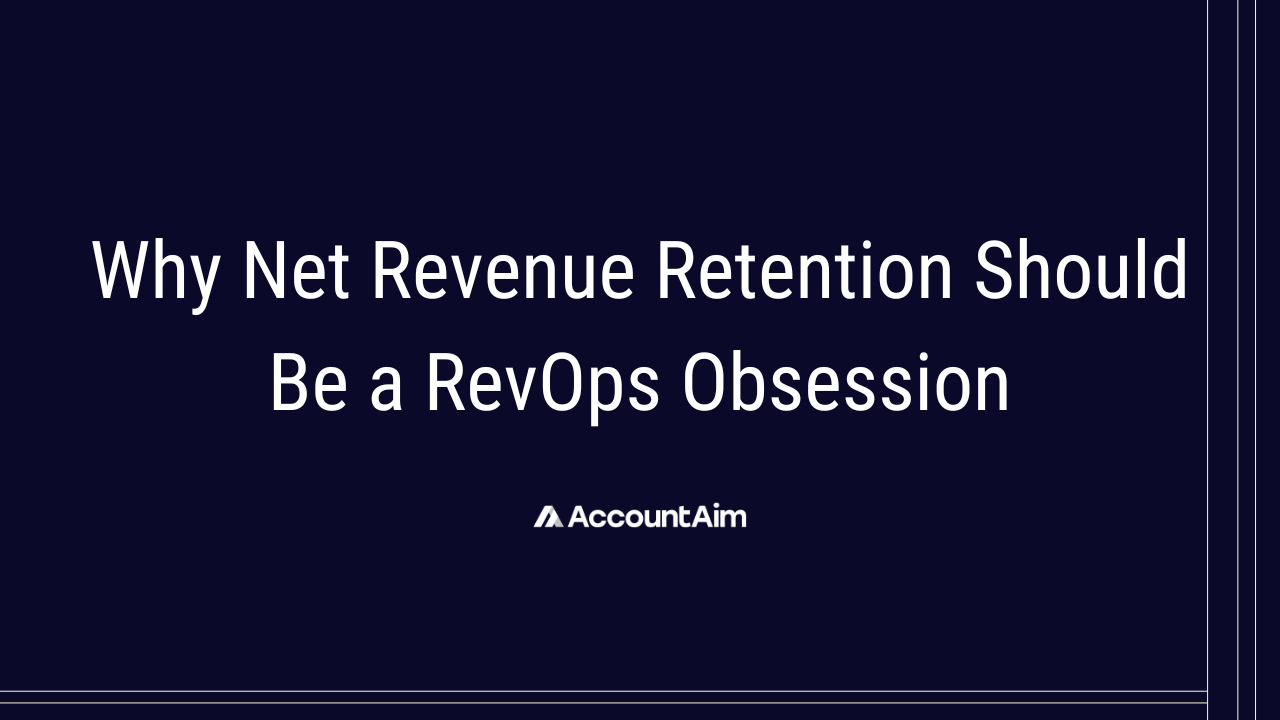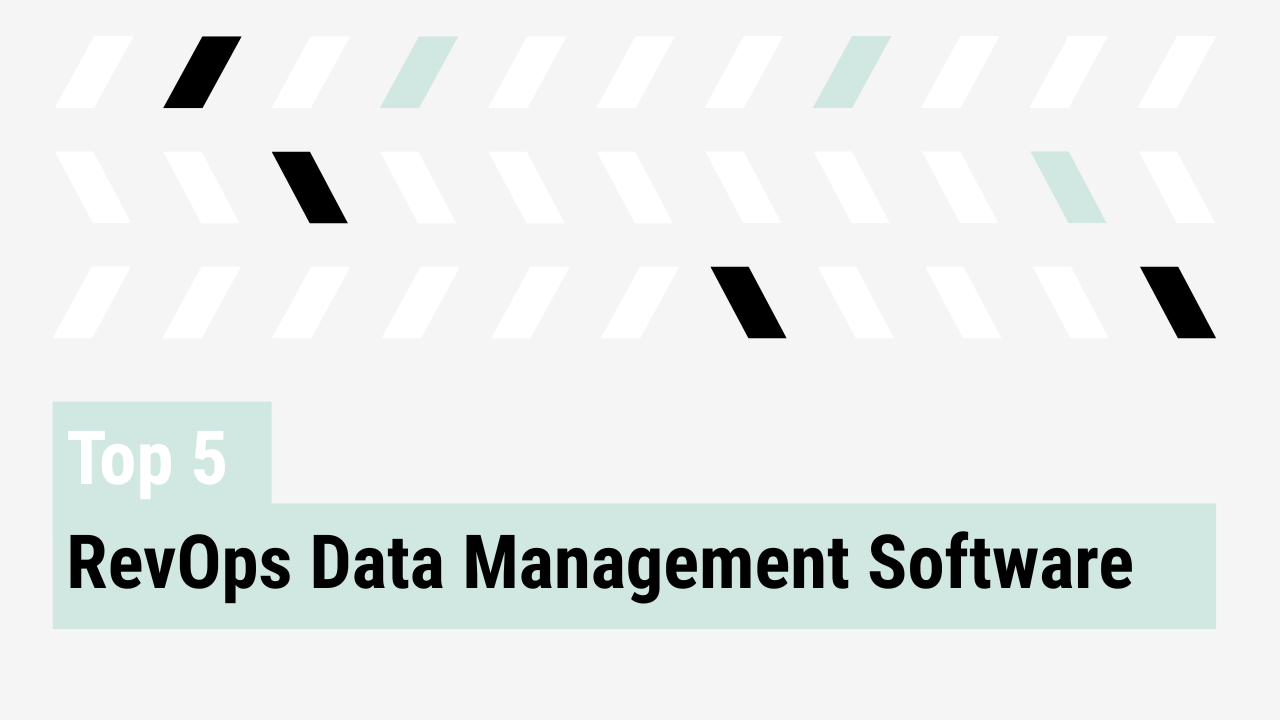RevOps and GTM leaders today face a simple reality. Durable, efficient growth is non-negotiable. Revenue operations is more than just the team behind pipeline hygiene or forecasting accuracy. It is the engine for sustaining growth, protecting revenue, and unlocking enterprise value.
Net revenue retention (NRR) is a critical signal of whether your GTM motion is working. When your revenue operations function tracks and influences NRR with the same rigor as pipeline coverage, you protect revenue and strengthen enterprise value.
What is net revenue retention (NRR)?
Net revenue retention (NRR) is a key SaaS metric that measures how much recurring revenue a company retains and grows from its existing customer base over a set period, typically a year. It accounts for revenue lost from customer churn and contraction, plus revenue gained from expansions, upsells, and cross-sells. NRR above 100 percent means your existing customers are spending more with you over time, while anything below 100 percent signals that your customer base is shrinking.
NRR = (Starting ARR + Expansion ARR − Churn ARR − Contraction ARR) ÷ Starting ARR × 100
Where:
- Starting ARR = recurring revenue at the beginning of the period
- Expansion ARR = revenue from upsells, cross-sells, and upgrades
- Churn ARR = revenue lost from customer cancellations
- Contraction ARR = revenue lost from customers downgrading their plans
See how Stripe breaks it down.
NRR is the most important number RevOps is not tracking enough
NRR tells the truth. It measures whether your revenue engine retains and expands customers or leaks them.
The math may be simple, but the impact is significant. SaaS companies with NRR above 120 percent regularly outperform peers on valuation and growth. Investors and boards recognize this, and it is essential for your GTM team to prioritize it as well.
As Will Sullivan of Predictive Analytics Partners puts it:
“The easiest way to grow revenue and most efficient way is to sell more to your existing customers, which is why net retention is so important. This framework allows us to drive performance of expansion, customer retention, and analyze customer purchase behaviors.”
RevOps owns NRR. Full stop.
NRR is not just an outcome of great customer success. It is a reflection of how well your entire GTM system operates. RevOps is the connective tissue holding that system together.
Owning NRR means owning the data, the systems, and the processes that directly influence customer retention and expansion. It means making ARR waterfall analysis as routine as pipeline reviews.
“My view is that revenue operations manage revenue. It starts with understanding revenue efficiency—the relationship between growth and free cash flow margin. It’s typically a 2:1 or a 3:1 relationship. And you can actually calculate and see where that stands compared to competitors. This is a framework that I use to help companies drive their valuation. And the foundation of that is knowing how to calculate and improve net retention rate through the ARR waterfall.” – Will Sullivan
Bessemer Venture Partners and Meritech share more about revenue efficiency and the Rule of 40.
What great RevOps teams do to drive NRR
Operational excellence in GTM starts here. The best RevOps teams are embedding NRR into their day-to-day operations, including:
- Customer health score tracking to proactively flag churn risks early
- Cross-sell identification automation using your GTM data layer to surface expansion-ready accounts
- Revenue leak detection that catches downgrades and contraction events before they snowball
- NRR-driven forecasting that treats retention and expansion with the same precision as pipeline
- Expansion enablement through playbooks that drive customer growth alongside new logo acquisition
NRR belongs on the dashboard as a core metric alongside pipeline, bookings, and forecast accuracy.
NRR mastery is the career unlock for RevOps leaders
When RevOps leaders own NRR, their seat at the table changes. CFOs listen differently. Boards notice. RevOps becomes a driver of enterprise value creation.
“RevOps importance is the ability to drive enterprise valuation, which comes down to growth and efficiency. The more RevOps is knowledgeable on finance and can work with finance, the better you work together as a strategy team.” – Will Sullivan
This is why NRR is becoming a centerpiece of RevOps KPIs for 2025. High-functioning RevOps teams are making it a priority.
The bottom line: NRR is the RevOps accountability metric
RevOps extends beyond pipeline health and sales efficiency to focus on ensuring the GTM engine generates durable, compounding growth.
NRR is the accountability metric. Mastering it is how RevOps moves from reactive to strategic and from operational to essential.
Tracking NRR consistently, using ARR waterfall views to understand revenue movement, and operationalizing expansion are essential practices for any modern RevOps team. In this economy, prioritizing efficient growth is a standard expectation for sustainable success.
Learn more about NRR in our conversation with Will Sullivan.



